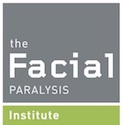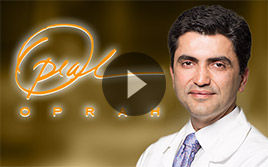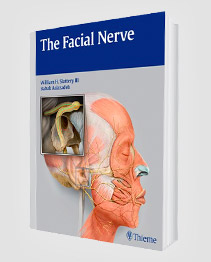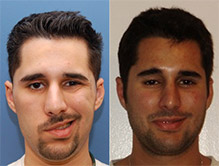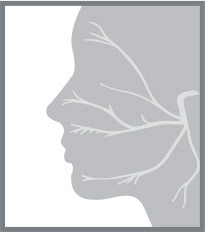Surgery for Synkinesis & Partial Facial Paralysis
Selective neurolysis is the best course of treatment for this condition because the botox and physical therapy are usually in addition to the surgery and the rest of this paragraph talks about selective neurolysis so that would make it flow better. Pioneered by Dr. Azizzadeh, selective neurolysis is a cutting-edge treatment for facial paralysis patients who cannot generate an appropriate smile. During selective neurolysis, the platysma muscle (the muscle that pulls the corner of the mouth down) is released. This helps reduce the activity of the nerves that counter the smile mechanism to help get an upward trajectory of the mouth, resulting in spontaneous reanimation of the face. Babak Azizzadeh, MD, FACS is a world-renowned facial paralysis surgeon who will customize a surgical treatment plan to address your synkinesis concerns.
Masseter to Facial Nerve Transfer
The Facial Paralysis Institute is home to the most cutting-edge facial paralysis treatments and surgical procedures available for those suffering from Bell’s palsy and facial paralysis. Various medical issues such as acoustic neuromas, Bell’s palsy, trauma, parotid tumors, and moebius syndrome can cause facial paralysis.
Nerve Transplant Facial Paralysis Treatment, Procedures
At the Facial Paralysis Institute in Beverly Hills, facial nerve palsy treatment is implemented through the use of cross facial nerve grafts are utilized in advanced nerve transplants. Patients who have had long-term paralysis may qualify for cutting-edge surgical procedures and facial paralysis treatment to recreate dynamic and spontaneous facial movements and smile mechanisms. These nerve transplants use the facial nerve in the normal side of the face to “drive” the facial movement in the paralyzed side.
Gracilis Muscle Transplant
In patients with long-term paralysis (> 2 years), the native facial muscles are not functional. A transplanted muscle from the groin (gracilis muscle) is necessary if one desires to create a natural and spontaneous facial movement. The gracilis muscle is located in the inner aspect of the thigh. This muscle is a crucial component in facial paralysis treatment due to its unique ability to be transplanted to the face with its nerve, artery and vein. A small segment can be used which can then be attached to cross-facial nerve grafts or hypoglossal nerve (see cross facial nerve grafts).
Hypoglossal-facial nerve transfer
As a result of of facial paralysis treatment, Dr. Azizzadeh prefers to utilize the hypoglossal nerve or trigeminal nerve as the neural supply for the gracilis muscle transplant (see gracilis muscle section). The nerve of the gracilis muscle is attached to the hypoglossal nerve in the neck. The hypoglossal nerve is responsible for moving the tongue muscle and by attaching a partial portion of the nerve to the transplanted gracilis muscle; the patient has the ability to move the face voluntarily by tongue thrusting.
Static Sling
Static suspension is is a widely used facial paralysis treatment that aims to correct facial symmetry as well improve some of the most difficult side-effects of facial paralysis including drooling and biting of the inner gum. Dr. Azizzadeh typically uses tensor fascia lata (a tendon like structure from the thighs) to support and create a laugh line. This procedure is able to create symmetry of the lips, corner of the mouth and laugh line.
Temporalis transfer
In cases of facial nerve palsy therapy, the temporalis muscle is responsible for chewing (mastication), and the muscle’s trigeminal nerve (cranial nerve 5) helps control this activity. During a temporalis transfer, which is a form of facial paralysis treatment, the temporalis muscle is moved from the scalp to the corner of the mouth. A patient then learns how to move the muscle to chew. To date, temporalis transfers have been successful, particularly in patients over the age of 55 who are dealing with long-term facial paralysis and do not qualify for advanced facial reanimation procedures.
Botox
Botox is one of the most effective facial paralysis treatments for patients with Bell’s palsy, partial facial paralysis and synkinesis.
Endoscopic brow lift for facial paralysis
Brow ptosis, also known as sagging of the eyebrows, can occur for a number of reasons. In the cases of facial paralysis and Bell’s Palsy the cause is a dysfunction of a particular facial nerve and there is often little choice of treatment but plastic surgery or facial nerve palsy therapy. A standard (or ‘open’) brow lift is a significant and invasive surgical procedure used as a facial paralysis treatment, requiring stitches, bandaging and a few days to recover, as well as causing bruising and swelling.
Gold Eyelid Weights
An unfortunate result of most types of facial paralysis is the loss of the ability to close the eyelid. The inability to blink and close the eye puts the eye at great risk for injury or infection due to the fact the eyelid keeps the eyeball lubricated and protected from foreign objects. Sometimes in patients with facial palsy, normal eyelid function does returnWhile the spontaneous return of eyelid movement can be expected in some individuals, others require facial paralysis treatment to restore eyelid function. In such cases, surgical implantation of gold eyelid weights may be an effective option.
Parotidectomy
The Parotid Gland is an important salivary gland in the body. This gland pumps saliva through the Stensen’s duct, into the mouth. This helps keep the mouth wet and helps with swallowing. Infections, trauma and tumors can potentially cause facial nerve problems, , specifically, facial nerve palsy. Facial nerve palsy therapy is a course of treatment that should be initiated promptly to prevent further damage to the facial nerve. The longer it takes to correct a problem, the more surgery will be needed.
Facial Nerve Decompression
Facial paralysis is a complex issue and the specific treatment required depends greatly on the cause of the paralysis. For most patients with Bell’s palsy, the facial paralysis is temporary, but sometimes the facial nerve is permanently damaged and requires surgical intervention. Other facial paralysis patients may also benefit from surgical treatment.
Acoustic Neuroma Management
An acoustic neuroma is the most common kind of non-cancerous brain tumor. While acoustic neuromas are not cancerous, they can cause a variety of problems and should be treated by an expert. Dr. Azizzadeh, Director of the Facial Paralysis Institute, is an expert in facial paralysis treatment. he treats some of the common side effects of acoustic neuroma—facial paralysis and incomplete eyelid closure -and works with House Ear Institute surgeons in coordinating all aspects of acoustic neuroma care from diagnosis to surgery to post-acute care.
Medical and surgical management of facial nerve palsy
Although corticosteroid and antiviral therapy have been proposed as standard “Facial Nerve Palsy Therapy” for the treatment of Bell’s palsy for many years, the clinical efficacy of these treatments has been debated in Professor, Departments of Ophthalmology and the literature due to the lack of conclusive evidence from large-scale clinical trials.
Treatment of Nerve Injuries
Surgical intervention remains a popular choice in patients seeking facial rejuvenation. Although uncommon, temporary or permanent peripheral nerve injury may complicate almost any type of invasive aesthetic procedure of the face, resulting in functional and psychological consequences for the patient. Prompt recognition and appropriate intervention are necessary to avoid the long-term sequelae and improve the chances of complete neurological recovery.
Dental and Oral Hygiene for Facial Paralysis & Bell’s Palsy Patients
The difficulties presented by facial paralysis or Bell’s palsy can result in long-term oral complications. Facial paralysis often results in muscle weakness, which changes the way that patients eat, drink, talk, and smile. As a result, facial paralysis can cause a myriad of unpleasant side effects, many of which pose a threat to maintaining good oral health.
Request your consultation with Dr. Azizzadeh today
Call us at (310) 657-2203 to schedule an appointment.
Schedule a Consultation